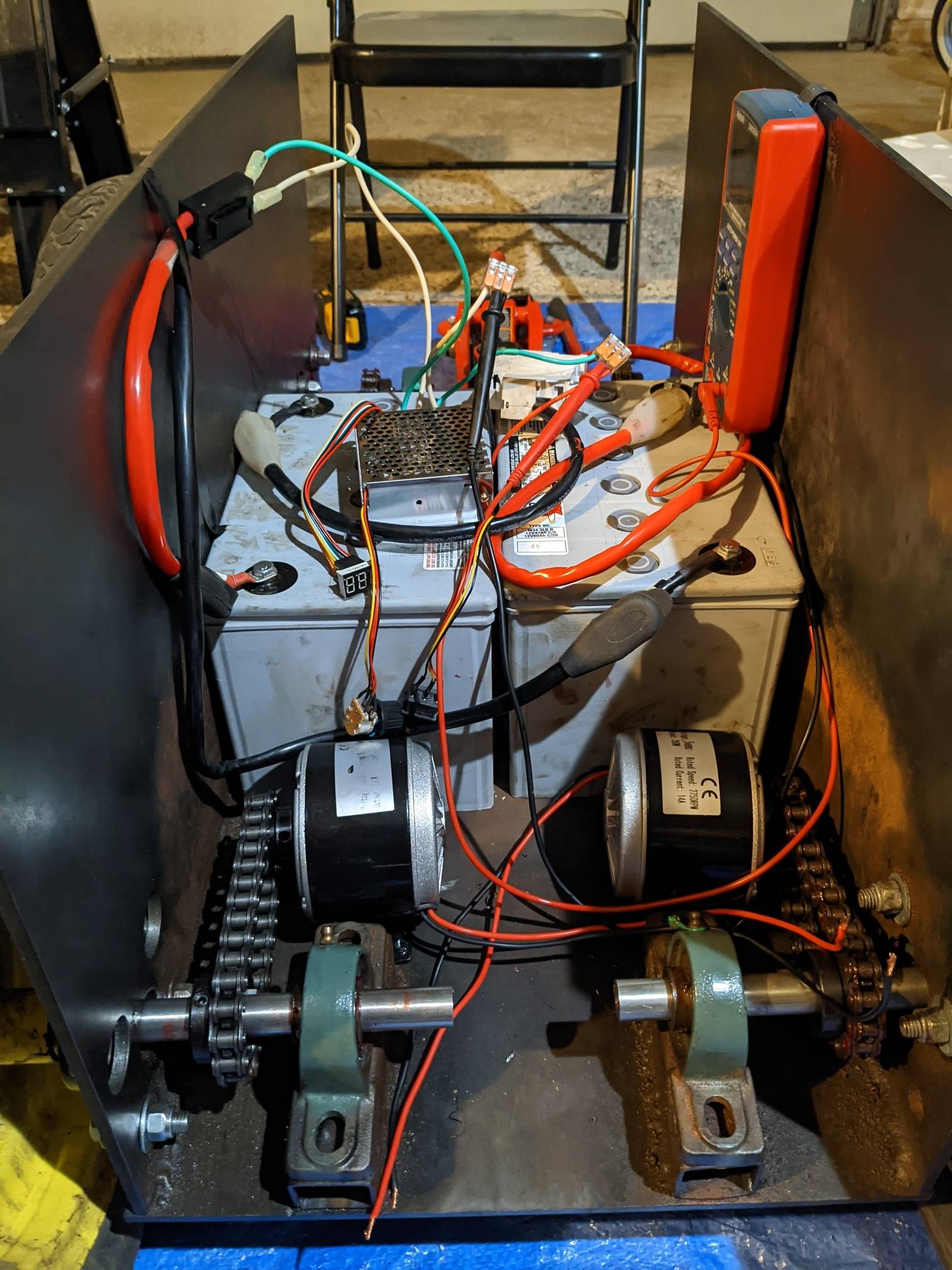I want to preface this by saying I am software engineer so each part of this robot build has been a lesson on its own. From welding, to CAD design, pillow block bearings, etc, etc....
I am working on a DIY Rover using the following components:
- 4 DC Motors from electric scooters: 24V, 250W. Connected to axle with #40 roller chains and sprockets.
- 4 Lawn Mower Wheels. They are 16x6.50-8 for a 3/4" axle with a keyway
- A Pair of 12 Volt - 60Ah GEL Batteries : I pulled them from a discarded electric wheel chair. They are fully charged, and they show 26V when connected in series
- I replaced the stock sprockets on the motors with these #40 chain 12 teeth, 1/2" pitch.
- I put the same sprockets on the axles
The problem is that the robot does not begin to move. When I lift the wheel off the ground, they move fine, and spin fast depending on how much throttle I give them.
However on the ground they don't move, which is typically a torque problem.
However I am not so convinced because these motors are supposed to be for electric scooters and each one capable of moving an adult person, weighing 175+ lbs.
Here are my diagnostic steps:
- Using a FLYSKY controller and 12x2 Sabertooth motor controller. Unfortunately this controller has an over current protection, and those batteries are massive, so it just shuts itself down whenever I move throttle just a little bit. But again, when the wheels are off the ground they are spinning fine, so the connections are fine.
- To avoid the over-current protection problem, I purchased this 60Amp DC Motor Controller. I connected it to just one wheel so far, and spliced a Multimeter into the connection to measure voltage. I can see the motor will get up to 20V when I turn the Potentiometer dial, and I can see the car begin to try to move.
Another question is: what's a good way to measure how many Amps the motor is trying to pull?
My conclusions are:
- The chains are just too heavy for this motor. It's a #40 chain which is way overkill. The sprocket on the motor shaft and the axle are also too heavy
- The tires maybe too heavy. But again, it's 4 x 250W motor that's getting 24V and probably up to 10Amps
What is your advice?
What would you do to fix this problem with minimal changes to the design? I.e. just replacing the sprockets? Or are the tires also too heavy?
How would I keep the tires and motors as is? Replace the sprockets and chains? Figure out a way to give a higher initial Amperage?


